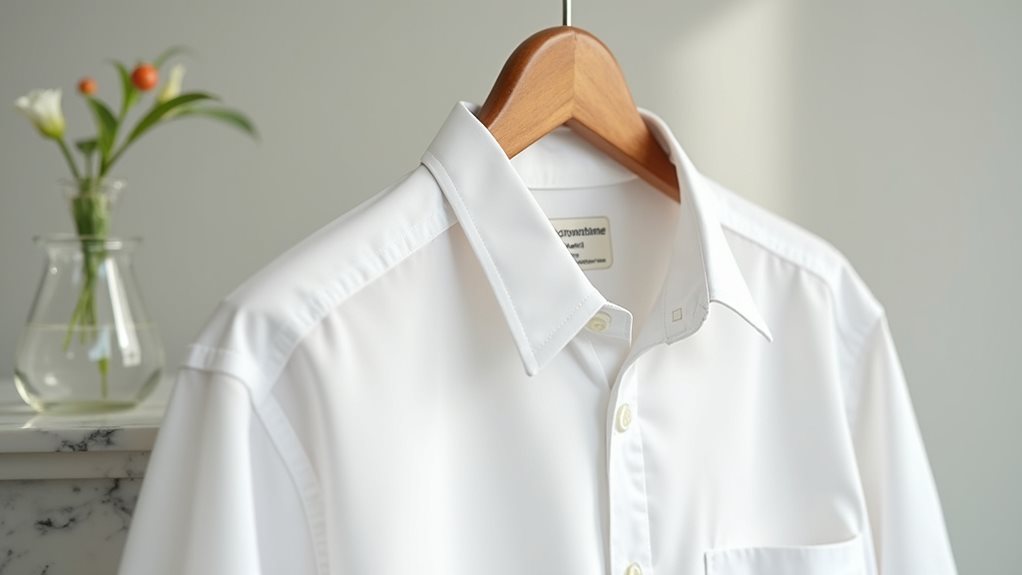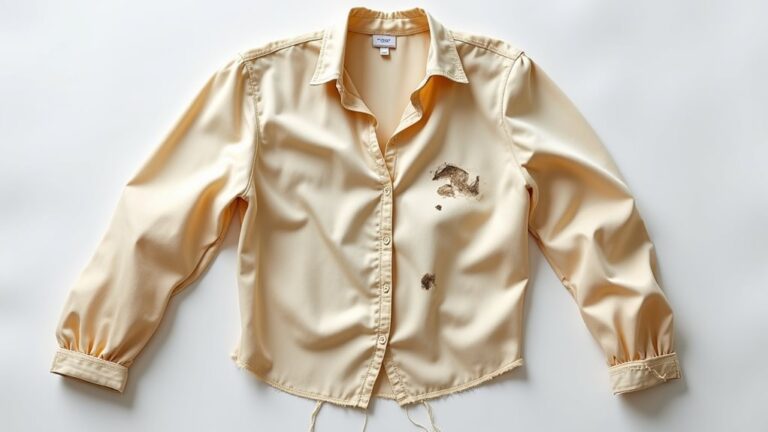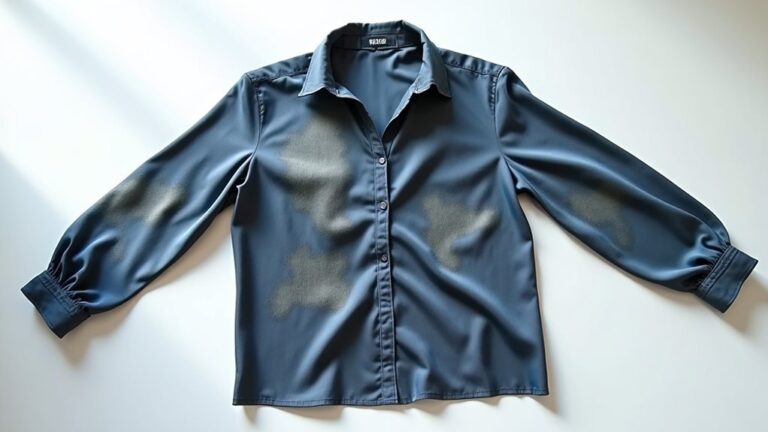Dry cleaning absolutely gets things clean, but it’s like having a specialized tool that excels at specific jobs—think of it as your fabric’s personal superhero for oil-based stains, grease, and makeup mishaps. The chemical solvents work differently than water, breaking down molecular structures while preserving delicate fabrics like silk and wool that would otherwise shrink or lose their shape. However, you’ll discover that understanding when to choose dry cleaning over traditional washing makes all the difference.
What Is Dry Cleaning and How Does It Work?
While most of us have dropped off our favorite dress shirt or delicate sweater at the dry cleaner’s, few people actually understand what happens behind that mysterious curtain where our clothes disappear for days.
The dry cleaning process actually uses chemical solvents, primarily perchloroethylene, instead of water to clean your garments—hence the “dry” part that always confused me! 😅
The mystery behind “dry” cleaning finally makes sense—it’s all about chemical solvents doing the work instead of water!
Your clothes start with an inspection step where professionals identify stains and pre-treat them with specific chemicals.
Then they’re placed in specialized dry cleaning machines that gently circulate solvents through delicate fabrics, lifting dirt without the harsh agitation of traditional cleaning methods.
This professional dry garment care effectively removes oil-based stains while preserving your clothes’ shape and texture better than water-based stains removal.
After the solvent cleaning process, garments undergo drying and pressing to restore their original appearance and ensure they look crisp and professional when you pick them up. The final step involves careful pressing with eco-friendly alternatives becoming increasingly popular as dry cleaners move away from traditional chemical solvents.
The Science Behind Dry Cleaning Solvents
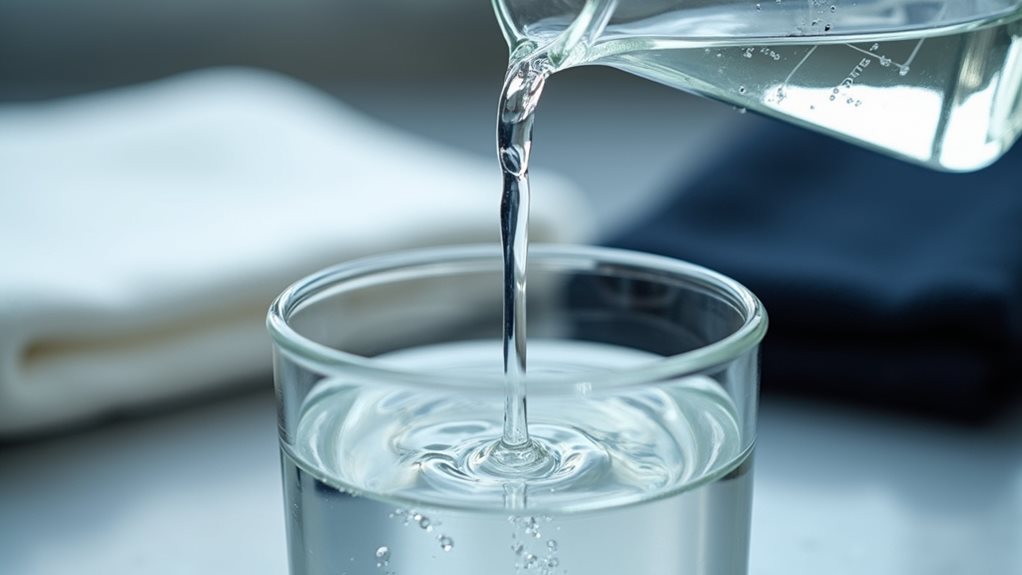
The magic behind dry cleaning’s effectiveness lies in the fascinating chemistry of its solvents, which work completely differently from the water-based cleaning you’re used to at home.
Unlike water that penetrates fabric fibers, dry cleaning solvents like perc dissolve oil-based stains by breaking down their molecular structure through gentle agitation.
Think of it like using the right key for the right lock – these chemical solvents are specifically designed to tackle greasy, stubborn stains that laugh in the face of your home washing machine 😅.
Modern alternatives like liquid carbon dioxide are revolutionizing the industry with improved eco-friendliness, protecting both delicate fabrics and our planet.
The environmental impact has greatly decreased as machines now recover 99.99% of solvents, making stain removal both effective and sustainable.
While many establishments are transitioning to greener options, petroleum-based solvents continue to dominate the industry due to their proven cleaning effectiveness and the existing infrastructure built around these traditional cleaning methods.
What Stains and Dirt Does Dry Cleaning Remove Best?
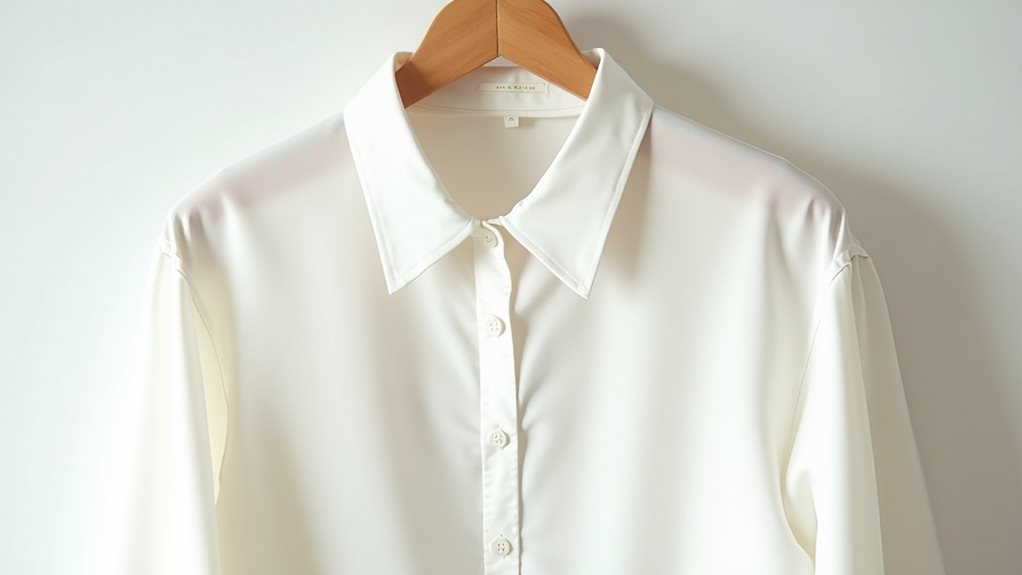
Why does dry cleaning seem like magic when it comes to certain stains that leave you absolutely defeated at home? The secret lies in those powerful chemical solvents that dissolve oil-based stains like grease, makeup, and stubborn food spills that laugh at your washing machine’s attempts.
When you’ve got delicate fabrics like silk or wool, dry cleaning becomes your hero, lifting dirt without the fabric damage that water and agitation cause.
Even water-based stains like coffee and wine can disappear when they’re pre-treated properly during the cleaning process. The combination of specialized solvents and high heat doesn’t just tackle stains removal—it sanitizes your garments too, killing bacteria that regular washing might miss.
This careful approach helps preserve the shape and texture of your garments while preventing the shrinkage and fading that often occurs with traditional washing methods.
It’s honestly impressive how effective this process is!
Limitations of Dry Cleaning Effectiveness
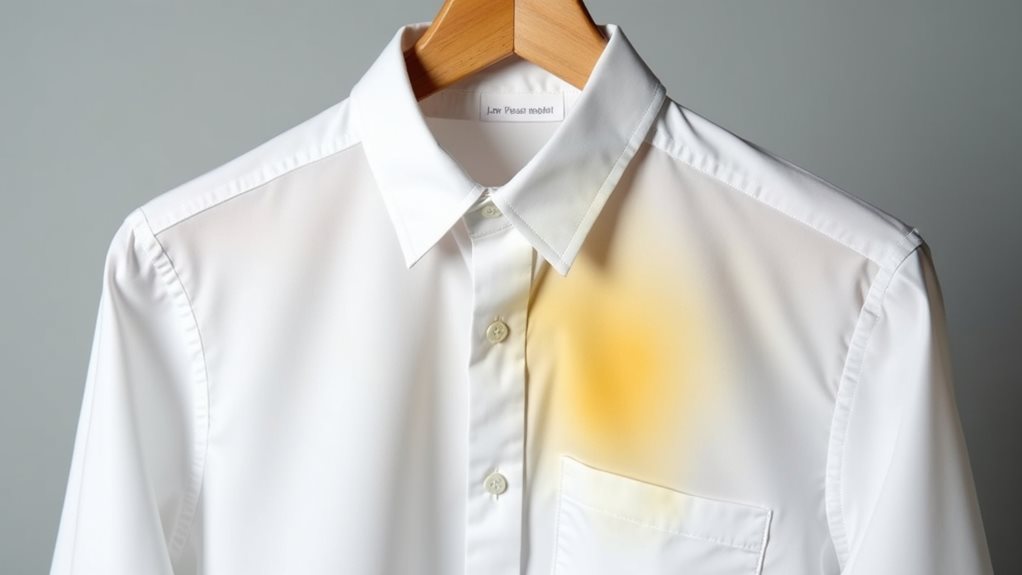
Although dry cleaning works wonders on oil-based stains, it’s not the superhero solution for every cleaning challenge you’ll face.
Water-based stains from your morning coffee spill or workout sweat? The solvent just can’t penetrate fibers like water does, leaving you disappointed. I learned this the hard way when my favorite silk blouse came back still sporting that cranberry juice mishap 😅.
The effectiveness really depends on fabric type too – those gorgeous sequined pieces might actually get damaged during the process. Even with pre-treatment processes and spot cleaning, some limitations persist.
The solvent doesn’t sanitize like your home washing machine, and certain cleaning instructions simply can’t overcome dry cleaning’s inherent boundaries with water-based messes. The age of stains also plays a crucial role in determining whether dry cleaning will be successful, as older stains become increasingly difficult to remove regardless of the cleaning method used.
Comparing Dry Cleaning Results to Traditional Washing
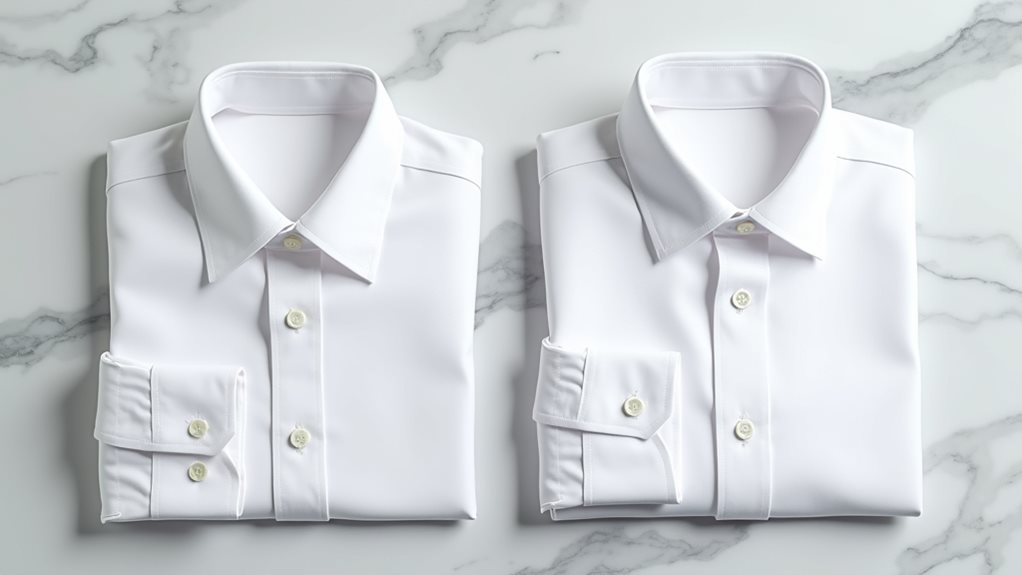
When you’re standing at your closet wondering whether to toss that stained blazer in your home washer or trek to the dry cleaner, understanding how these two methods stack up can save you both heartache and money.
Standing at your closet with that questionable garment, the right cleaning choice can save you from both ruined clothes and wasted cash.
Here’s the honest truth: dry cleaning absolutely dominates when you’re dealing with oil-based stains and delicate fabrics like silk or wool, since those specialized solvents penetrate without causing the shrinkage that water-based washing typically creates.
However, traditional washing wins hands-down against water-based stains that dry cleaning solvents can’t touch.
The real game-changer? Those finishing touches you get from professional cleaning – the steaming, pressing, and attention to detail that makes your garments look crisp and polished, something your home dryer rarely achieves, even with eco-friendly alternatives becoming more common.
Beyond cleaning performance, dry cleaning’s use of chemical solvents instead of water makes it the superior choice for preserving fabric integrity and maintaining the original shape of structured garments like suits and formal wear.

